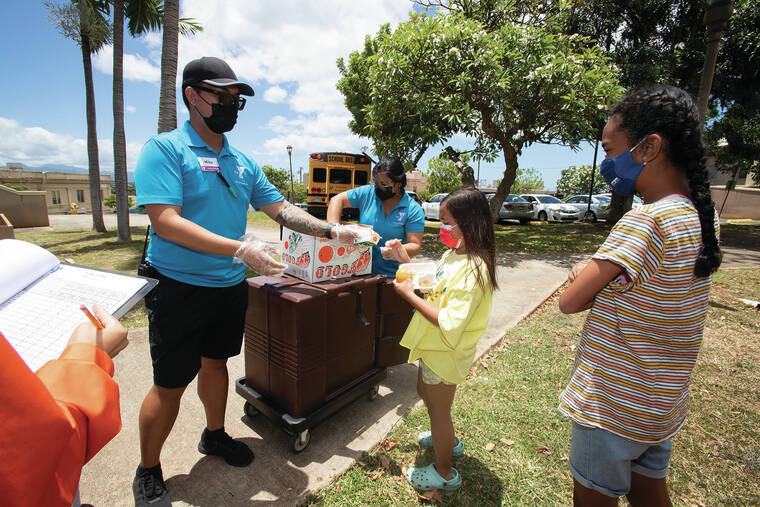One of the more distressing consequences of Hawaii’s high cost of living is the cost of food — particularly for our keiki, who too often can’t get high-quality, nutritious meals on a regular basis.
When it comes to food insecurity — defined as the lack of access to sufficient food because of limited financial resources — Hawaii fares among the worst, especially for children, according to an analysis by Feeding America.
Hawaii ranked in the top 10 states for projections for highest overall food insecurity in 2021. For children, we ranked No. 2. By some accounts, 1 out of every 3 children in Hawaii can’t get enough to eat.
So it’s disturbing to learn that the state apparently is getting millions of dollars less in federal funding than it should to support what has become an essential service: the school breakfast and lunch.
Reimbursements to states for federal programs that feed hungry children cover about 85% to 90% of costs on average — but not in Hawaii, where it’s only about 55%, according to a new report from Hawaii Appleseed.
The report estimates that since 2000, the state has spent more than $200 million to supplement the federal school meal programs because of a grossly inadequate reimbursement rate, calculated in 1979, that doesn’t account for current cost-of-living increases.
Because of its remoteness and high cost of living, Hawaii’s reimbursement rate is set at 17% higher than the national average payment. The rate should be 62%, the report said, which would match what Alaska now receives.
It’s unfortunate that past efforts to increase the rate have failed.
“A 2015 attempt was unsuccessful,” the report noted, “with (the U.S. Department of Agriculture) requesting additional data and cost efficiency measures, which the (Hawaii Department of Education) was unable to implement and comply with considering existing staffing and budget constraints.”
The USDA is reviewing its reimbursement program for remote areas, a process that could take three years or more. This time, DOE needs to be fully involved to ensure that Hawaii gets its fair share.
The physical and mental well-being of many of Hawaii’s children — their ability to focus, to learn, to grow strong — depend on those school meals. But as inflation runs rampant and a recession looms, low-income families face greater hardships.
Hawaii’s congressional delegation has asked, rightly, that USDA provide an immediate temporary increase in Hawaii’s reimbursement rate. The state must continue its subsidies, keeping in mind that the DOE is obligated to use more fresh, locally sourced food, which could cost more. And the DOE will need to stretch its food dollars to reach more students.
It’s essential that these programs remain financially stable, reliable, and reach every child in need.

